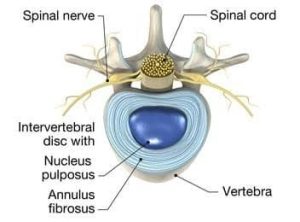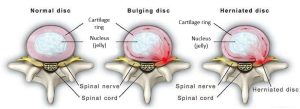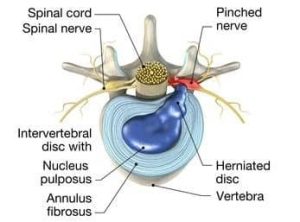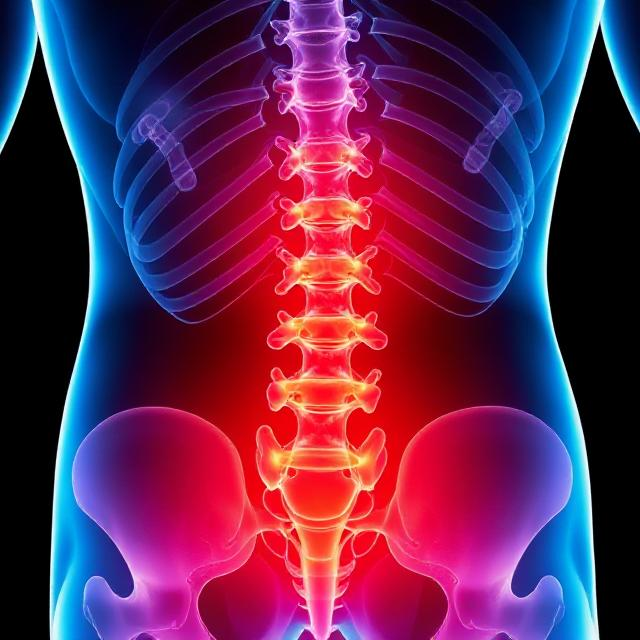Difference Between Disc Bulging and Herniated Disc


The intervertebral disc (or Intervertebral cartilage) is a layer of cartilage filled with gelatinous substance, which lies between each vertebral body of human spine. Each of the intervertebral disc forms a fibrocartilaginous joint, to allow movement between each vertebral body, and act as a cushion for the spine to absorb shock. The disc is surrounded by an outer layer of fibrocartilage called anulus fibrosus. This outer layer is surrounding an inner gel-like center, which is called nucleus pulposus.


Disc bulging:
When a disc bulge, it will only affect the outer layer of the disc. The mechanism of a bulging disc is the outer layer cartilage of the disc gets dehydrate and weaken, which leads to part of the cartilage protrude outward. Disc bulging is a degenerative condition, it is often related to aging and wear and tear of the spine. Although this protrusion does not affect the full perimeter, it usually affects at least quarter of the circumference of the disc, and it does not necessarily compress the spinal cord or the nerves. Disc bulging may or may not cause symptoms. When symptoms do occur, they can include localized pain, muscle stiffness or general discomfort of the area.


Herniated disc:
A herniated disc, usually also known as a slipped disc or disc rupture. A herniated disc results when there is a tear at the outer layer of the annulus fibrosus which allow the inner core (nucleus pulposus) to protrude out of the disc. Herniated disc often results of direct trauma or injury, however, chronic wear and tear of the disc is one of the factors as well. A herniated is more likely to develop painful symptoms compare to a bulging disc, as a herniated disc usually protrude further and have higher risk of the protrusion irritates nerve roots. The symptoms of herniated disc include shooting pain, tingling, numbness, and weakness of the area where the nerve is compressed.




Can Chiropractors help with disc problem?
Chiropractic care can be a valuable complementary approach for individuals with disc injuries. Chiropractors are specialized in diagnosing and treating musculoskeletal conditions. Chiropractors provide treatments that include spinal adjustments, manual techniques and exercises to help alleviate pain, reduce inflammation and improve the mobility of the affected area. In fact, Chiropractic care, when integrated into a comprehensive treatment approach, can be a valuable component in managing disc injuries and promote overall spinal health.
To summarize, the main difference between a bulging disc and a herniated disc is the extent of damage to the intervertebral disc and the potential impact on nearby structures such as nerves and spinal cord. Disc bulging is a milder condition where the disc’s outer layer protrudes but doesn’t rupture, while a herniated disc involves a more significant rupture and can lead to nerve compression and more severe symptoms. It’s important to consult a healthcare professional to diagnose and determine the appropriate treatment for these conditions.



